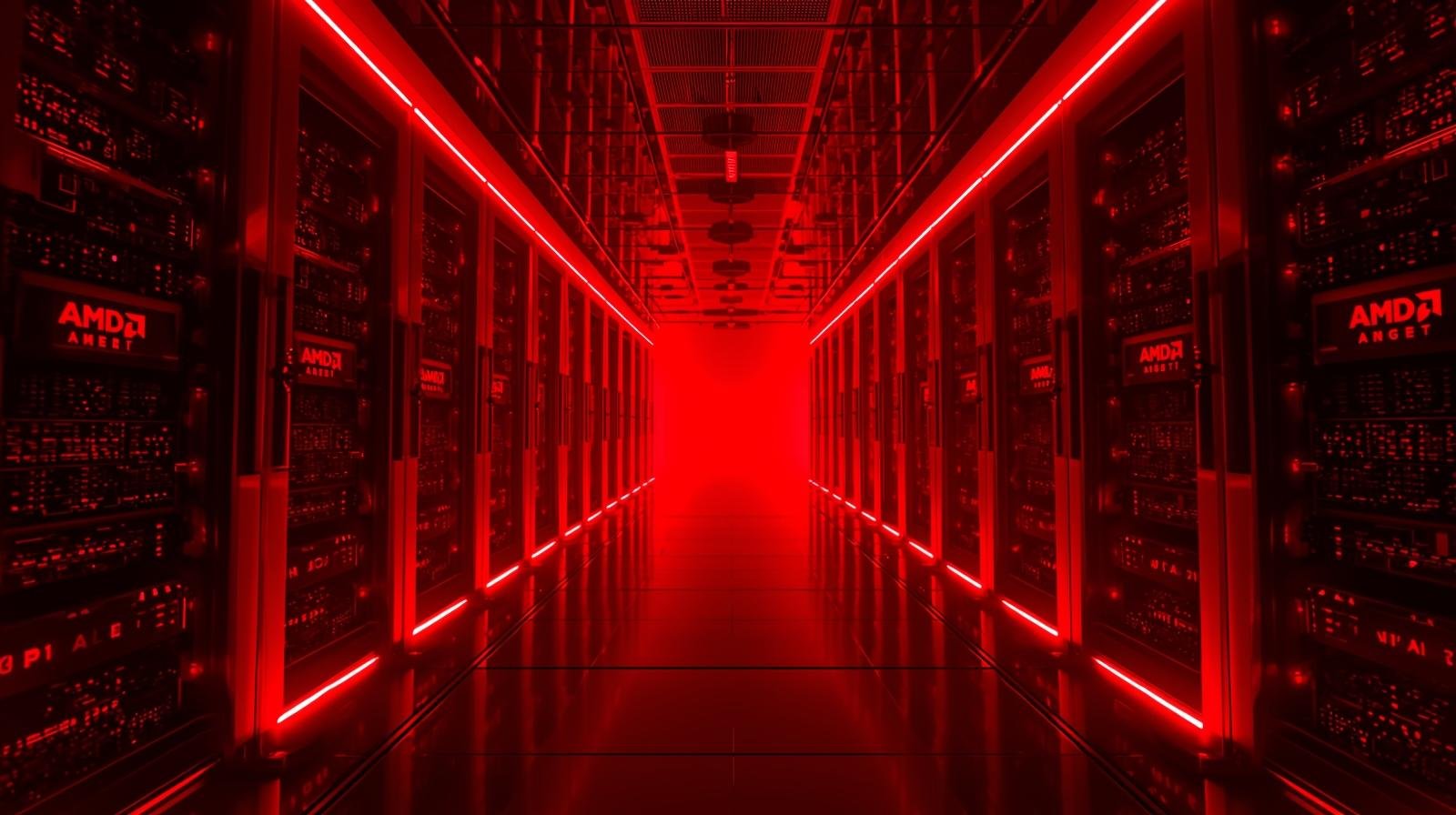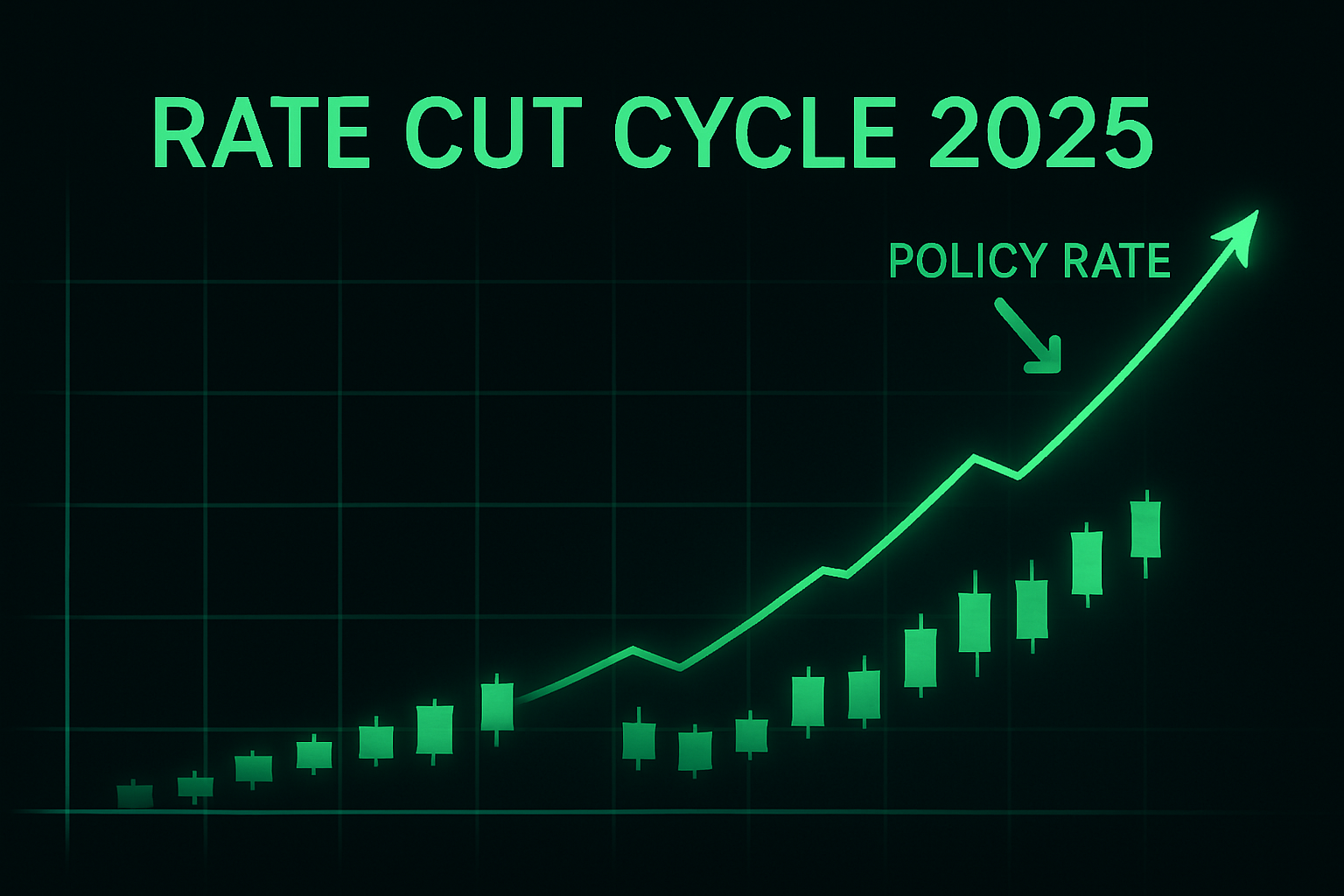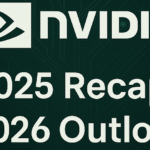How AMD Stepped Out of Nvidia’s Shadow This Week
For years, Advanced Micro Devices (AMD) has lived in the penumbra of its bigger, louder rival. Nvidia dominated the headlines, the valuations, and the market’s imagination. AMD, though technically impressive, often felt like the quiet sibling in a family of prodigies — competent, ambitious, yet constantly overshadowed. This week, that dynamic shifted. And it didn’t happen by accident.
Through a series of calculated moves — partnerships with OpenAI and Oracle, a bold new hardware platform, and a clear statement of intent at the OCP Global Summit — AMD signaled it’s not content being the alternative. It wants to define the next chapter of AI infrastructure itself. What’s emerging is a company with a coherent vision, a growing moat, and a story investors can finally see beyond the ticker symbol.
The Week That Redefined AMD’s Role in the AI Race
Every market cycle has its turning points. For AMD, the week of October 14, 2025, may be remembered as the moment it stopped chasing and started leading. The company’s announcement of its Helios rack-scale AI platform — a complete compute system integrating MI450 GPUs and EPYC CPUs — wasn’t just another product launch. It was a declaration of strategy: AMD wants to own the full stack, from chip to rack to cloud deployment.
Helios isn’t a theoretical prototype; it’s the foundation of major commercial deals. Oracle announced it would deploy tens of thousands of AMD’s new MI450 GPUs for its cloud services, beginning in 2026. Days earlier, OpenAI revealed a multi-year partnership to use AMD hardware for its next generation of AI infrastructure — a remarkable pivot given OpenAI’s historic dependence on Nvidia silicon. These are not symbolic wins; they’re commercial validation from two of the most demanding customers in the world.
For AMD’s leadership, this is vindication. After years of being the “budget option” for gaming or CPUs, the company is finally being recognized as a critical enabler of frontier computing. The stock reflected that shift, hovering near all-time highs around $233 after months of steady gains. But the price tells only part of the story. What’s happening underneath — the shift from components to infrastructure — may prove far more consequential.
Building the Rack, Not Just the Chip
At the heart of AMD’s new strategy lies a simple idea: scale. The Helios platform is designed for hyperscalers and AI labs that need thousands of GPUs working in sync. Each rack can hold up to 72 MI450 units, paired with over 30 terabytes of HBM4 memory — roughly 50% more capacity than Nvidia’s current Vera Rubin systems. It’s a technical advantage, but more importantly, it’s a statement: AMD understands that the future of AI hardware isn’t just about faster chips, it’s about the orchestration of compute at scale.
That distinction matters. Nvidia has long dominated because of its ecosystem — its CUDA software stack, its developer network, its partnerships across AI labs and data centers. AMD, historically, lacked that gravitational field. With Helios, the company is doing something different: building a physical ecosystem, where hardware, cooling, and system-level design are as integrated as Nvidia’s software stack. It’s an inversion of the usual playbook — one that could pay off in a market that’s rapidly diversifying beyond one vendor dominance.
The strategy echoes what we saw earlier this month in Tesla’s own pivot toward vertical integration in energy and battery systems. Like Tesla, AMD is realizing that in a maturing tech cycle, control of the supply chain is as strategic as product innovation. For investors, that shift is profound: it changes the narrative from “chipmaker” to “platform builder.”
The OpenAI Catalyst
Among the week’s headlines, the OpenAI partnership stood out — not just for its scale but for its symbolism. For years, Nvidia and OpenAI had been joined at the hip. Every major language model, from GPT-3 to GPT-5, was trained on Nvidia clusters. For OpenAI to publicly commit to AMD hardware is a tectonic move in the industry’s balance of power.
According to The Guardian’s report, the agreement involves up to six gigawatts of compute capacity — enough to train multiple trillion-parameter models simultaneously. Beyond the numbers, it signals confidence that AMD can deliver performance and reliability at Nvidia’s level. The deal also reportedly includes equity options for OpenAI, giving the AI lab a financial incentive to ensure AMD’s success. In other words: both sides are betting on each other’s future.
For AMD, this partnership does more than boost sales. It grants access to the bleeding edge of AI workloads — data and optimization insights that can feed back into chip design. That feedback loop, long monopolized by Nvidia, could accelerate AMD’s R&D cycle and help it close the performance gap faster than expected.
Oracle’s Vote of Confidence
If the OpenAI deal was symbolic, the Oracle contract was operational. Cloud providers live or die by efficiency. For Oracle to integrate AMD’s upcoming MI450 chips into its infrastructure — reportedly more than 50,000 units — is a sign of real confidence in AMD’s roadmap. It’s also a commercial win that reinforces the Helios platform’s viability in production environments.
AMD’s data center business has always been the quieter cousin of its CPU and gaming divisions. But Oracle’s move, following earlier partnerships with Microsoft and Meta, indicates that AMD’s long game is paying off. The company is becoming a central player in the hyperscale compute supply chain, which remains one of the fastest-growing segments of tech spending globally.
At a time when the broader semiconductor industry is wrestling with trade tensions, export controls, and supply bottlenecks, such diversified customer relationships are a shield. As Reuters noted in its coverage, AMD’s mix of domestic and global contracts gives it an agility few chipmakers can match.
The AI Infrastructure Race: A Market Matures
The AI hardware boom of 2023–2025 has been compared to the dot-com bubble for good reason — explosive valuations, overcapacity fears, and a flood of startups promising exponential growth. But where speculation ends, infrastructure begins. Companies like AMD, Nvidia, and Intel are no longer just selling chips; they’re building the roads and power plants of the AI economy.
Our recent Nvidia recap highlighted how the market is beginning to separate real revenue growth from hype. Nvidia remains the benchmark — a company whose execution still defines the upper limit of AI hardware performance. Yet AMD’s latest moves demonstrate that competition is finally arriving not through marketing, but through genuine technological alternatives.
Investors are starting to notice. In the past six months, AMD’s market cap has expanded by nearly 40%, while Nvidia’s has plateaued. That doesn’t necessarily mean leadership is changing hands, but it does reflect a broader market truth: investors are now pricing in a multi-vendor future for AI compute. Monopolies, even in silicon, don’t last forever.
Execution Will Decide Everything
For all the momentum, AMD still faces familiar challenges. Manufacturing scale, supply chain logistics, and driver optimization remain potential pitfalls. Nvidia’s decade-long lead in software integration — through CUDA, cuDNN, and proprietary networking solutions — is a formidable moat. Even with Helios, AMD must convince developers and enterprises that its ecosystem can match Nvidia’s maturity.
That’s why the next twelve months will be decisive. The first Helios racks will ship to Oracle in 2026, but pilot deployments are expected much sooner. Those early results — performance, stability, power efficiency — will determine whether AMD’s new chapter becomes an era or a footnote. For investors, it’s worth remembering that markets move faster than production schedules. AMD’s stock may already reflect expectations of flawless execution.
Yet in one sense, the company is playing with house money. After years of being underestimated, the narrative wind has shifted in AMD’s favor. CEO Lisa Su has built a reputation for measured risk-taking, and this week’s moves are consistent with that style: ambitious, but not reckless. The deals with OpenAI and Oracle are structured, phased, and mutually reinforcing. It’s a long game — and one AMD seems prepared to play.
A Subtle Shift in Market Psychology
Something else changed this week — not in silicon, but in sentiment. Analysts who once described AMD as “the second option” are now referring to it as “the other leader.” That linguistic pivot matters. Markets are built on narratives, and AMD’s is finally evolving from catch-up to co-leadership.
Investors, too, are beginning to treat AMD less like a high-beta momentum stock and more like a core AI infrastructure holding. That’s a subtle but meaningful shift. It aligns AMD’s perception closer to Tesla’s transformation in 2020–2021 — from “EV upstart” to “industrial backbone.” Tesla’s story taught us that once a company crosses that psychological line, capital follows.
The Road Ahead
For all the excitement, AMD’s new chapter is just beginning. The AI infrastructure market is estimated to exceed $400 billion by 2028, but it’s a moving target — shaped by geopolitical factors, software trends, and power constraints. The partnership with OpenAI could anchor AMD’s relevance for years, but it will also expose the company to unprecedented scrutiny and expectations.
Still, this week’s events underscored something deeper: AMD is no longer waiting for permission to lead. It’s building its own path, one rack at a time. In doing so, it’s challenging not only Nvidia but also the industry’s assumptions about who gets to define the future of computing.
In markets, symbolism often precedes substance. This week, AMD managed to deliver both.





